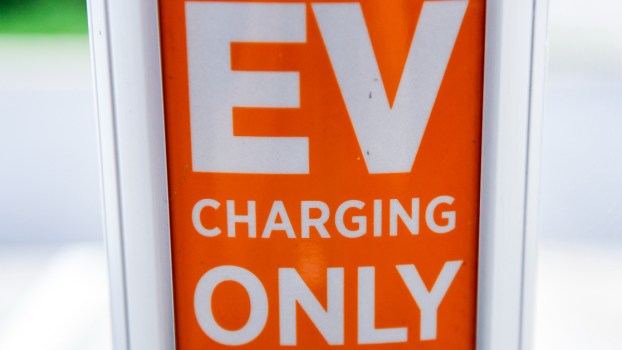
GM Has a Foolproof Tool to Figure Out if an EV Is Eligible for Tax Credits
Tax credits have long been an appeal for buying an electric vehicle (EV). The first tax credits for purchasing EVs in the U.S. started over a decade ago during the Obama Administration. In 2009, the federal government created an incentive to offset the higher production costs of EVs, which were often passed on to the consumer. By reducing the sticker price to make it more equitable, electric car popularity rose significantly in the years after that rollout.
That tax incentive meant that anyone who bought a new, qualifying EV could get at least $2,500 in base credits. That credit could grow to as much as $7,500 depending on the EV’s battery capacity. However, that incentive came with a catch: it would phase out once a manufacturer reached 200,000 EVs sold. This doesn’t mean the unlucky buyer of a company’s 200,001st EV would be out of luck. They’re still eligible for the rest of that quarter, as well as the subsequent quarter.
Still, with a complicated structure, it can be challenging to determine which tax incentives different EVs qualify for and for how much. However, there are guides and tools to help in that process.
How do I know if an EV is eligible for tax credits?

The Internal Revenue Service (IRS) released new guidelines for EV tax credits starting in 2023, thanks in part to the Inflation Reduction Act of 2022. This legislation changed tax credit rules for qualifying vehicles from 2023 through 2032. Overall, the benefit is available for both individuals and their businesses.
To start, you must buy the vehicle for your own use and primarily for use in the U.S. There are also income requirements. Qualifying married couples filing jointly cannot make more than $300,000 in adjusted gross income (AGI); heads of households cannot make more than $225,000 in AGI; all other filers cannot exceed $150,000 in AGI. You can use the AGI from the year you buy your new EV or the one before, whichever is a lower number.
For vehicles placed in service between Jan. 1 and April 17 of 2023, qualified buyers get a base $2,500 credit. Beyond that, there are two more incentives: $417 for a vehicle with at least seven-kilowatt hours of battery capacity and $417 for each kilowatt hour of capacity beyond five-kilowatt hours. The limit is $7,500, and the minimum is $3,751.
For those placed in service starting April 18, the U.S. Department of Energy states incentives remain, but now the new EV must meet specific critical mineral and battery component requirements. If it meets both conditions, the full credit is available. If it meets one of them, up to $3,750. If it meets neither, you are not eligible for a tax credit.
Qualifying vehicles also have MSRP limits to qualify. Vans, SUVs, and pickup trucks cannot exceed $80,000. All other vehicles cannot exceed $55,000.
GM’s tool for finding a qualifying EV
All those numbers aside, figuring out how much of a tax credit you can get for your new EV can still be quite confusing. Luckily, General Motors (GM) has a tool that makes the process much easier, with available electric cars like the Chevy Bolt EV and Cadillac LYRIQ still eligible for the credit.
To determine how much of a credit you can get, the tool only requires the Vehicle Identification Number (VIN) of a GM EV. You can get that from GM or a dealer’s website, then use the tool to find out how much of a credit you are eligible for. For example, a 2023 Chevrolet Bolt EUV would qualify for the full $7,500 credit if you meet the AGI requirements. Instead of going through IRS rules and regulations, you can enter the VIN here and get an answer in seconds.
Are there other tools to help find a qualifying EV?
Not everyone is going to buy a General Motors EV. They’re well-rated — the 2023 Chevrolet Bolt EV and EUV are TrueCar’s best electric vehicles for the money — but are a small part of the entire EV market.
If you’re looking outside of GM for an EV, the Department of Energy has another tool for determining whether you qualify for a tax credit. As long as you meet the income requirements, you can find cars by make and model to find out what does and doesn’t qualify.
More than anything, a more straightforward system for deciding EV credits would be better for consumers. Rather than having to track the kilowatt-hours of an EV’s battery capacity, the specific components of the battery itself, or how many units of a particular model have sold in the U.S., consumers would be better off with a simple yes, no, and sliding scale for models in between. If the future of electric vehicles and other non-internal combustion engines is critical to the Department of Energy and the U.S. as a whole, it needs to be easier on the everyday consumer.



